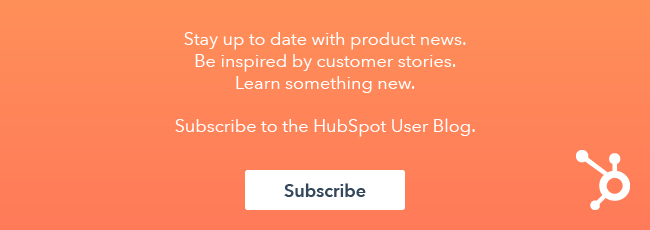Should your offer have a landing page? Or will a targeted lead flow perform more effectively?

What Is a Form?
Definition
HubSpot users are very familiar with forms. These days, however, as technology continues to bring us tools like chatbots and live chat, it's hard to predict where that will leave traditional tools such as landing pages or forms. Like email, forms and landing pages aren't going anywhere quite yet. As a result, it's important to maintain perspective on what they are and how they can help your inbound marketing efforts.
To review, forms are one of the most essential lead generation tools a marketer will use on their website, allowing your company to find out more information about those visiting your site, and upon submission, provide the visitor with the promised offer.
This transaction provides value to both parties. The visitor receives valuable information intended to help them discover why you're the best source for their needs. At the same time, your company finds out more information about its leads, which can inform further content and conversion optimization strategies.
Form use cases
Forms are typically used as a very specific conversion path. A call-to-action brings a visitor to a page with an embedded form that redirects to the thank you page. Forms can also be embedded in the sidebars or modals across your website.
Optimization tips
Forms are highly situational. What a successful form looks like will depend on factors such as who you're engaging with, where they are in their buyer's journey, and what kind of relationship they've already established with your company. With that in mind, here's some areas you can experiment in to optimize the conversion rate of your form:
Is your form above the fold?
You may be losing out on a portion of traffic if your form is below the fold. Experiment with increasing the visibility of your form to ensure it's accessible to any users that may be interested in your content offer. They've made it to your landing page, now let's make it possible for visitors to get to your thank you page!
How many form fields do you have?
Does the information you're asking for match the value of the content you're offering? Remember that forms represent a highly transactional exchange. If there is an imbalance in value, your conversion rate may be suffering. Experiment with how many fields are on your form, removing any that aren't absolutely necessary for your business to know. As you develop relationships with your leads, features such as progressive profiling or smart fields can help you continuously gather more data.
Need the fields you have? Try experimenting with multi-step forms and breaking a long form into several shorter ones. You may find that your conversion rate improves based on your visitors' perception of the length of the form.
Have you linked to your privacy policy?
Consider linking your company's privacy policy in your email field label. This can help mediate any anxiety your visitors may be feeling about parting with their contact information. It can also help improve your credibility through assuring visitors you won't be sharing or selling their information without their permission. No one likes getting emails they didn't sign up for.
Framing your form
Consider the following questions:
- Is your submit button using an action-oriented phrase?
- What about your landing page's headline?
- Does the copy of the landing page clearly demonstrate the value a user could get out of your content?
- Is there consistency between the copy on your CTA button and the copy on the landing page?
- Is the language too formal? Too conversational?
You may consider experimenting with each of these areas. How your visitors feel about your forms will depend on all of the elements that lead to and directly frame the form.
Before choosing to implement any change, take a step back and consider your buyer personas. Based on who they are and their end goals, what will create the best experience? If you have other forms on your website, think about which ones are performing the best. What does this say about your website audience's preferences?
What Is a Lead Flow?
Definition
Lead flows are pop-up forms. While the tool has been around for a while, there may be some lingering doubts about whether or not a pop-up form can truly be inbound. In the end, it comes down to intention, execution, and embodying the inbound principles - being human, helpful, and holistic.
The key difference between forms and lead flows is the experience they provide. Forms collect information on a landing page and either redirect or initiate a follow-up process where a visitor receives their content offer. Lead flows, on the other hand, are a CTA button, a landing page, and thank you page all in one. They enable a conversion to occur without requiring a visitor to leave the page they’re currently browsing, a page which is likely as relevant to your visitor as your content offer itself.
Lead flow use cases
- Generate more blog subscribers.
- Offer your visitors ebooks.
- Enable visitors to sign up for your webinar.
- Link to your demos or trials.
- Connect to relevant cheatsheets, worksheets, check lists, or templates.
- Got any user guides? Lead flows can help with that.
- Link to any original research or data that may be related to the content your visitors are viewing.
Optimization tip
Lead flows usually generate attention based on the following four factors:
- The time the lead flow is shown
- The placement of the lead flow
- The color and style
- The language seen within the lead flow
If you're noticing that the conversion rate of your lead flow isn't aligning with your goal, try experimenting with one of these factors. If you have a lead flow appearing in the middle of the page, try placing it on the bottom left or right corner. Does the language of your lead flow match the content seen on the page it appears on? Experiment on the effects of consistent language.
The change is up to you and highly dependent on your buyer persona. Make sure you only experiment with one element at a time, however, to ensure you can attribute any increases or decreases in conversion to the exact change you made.










